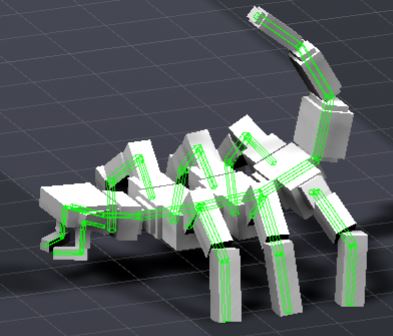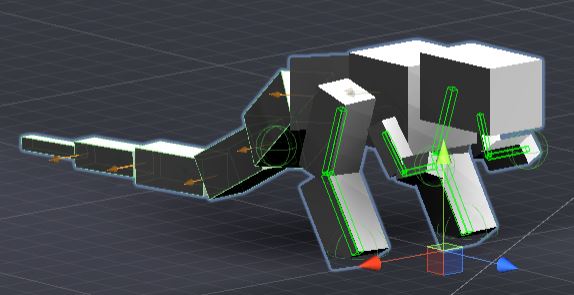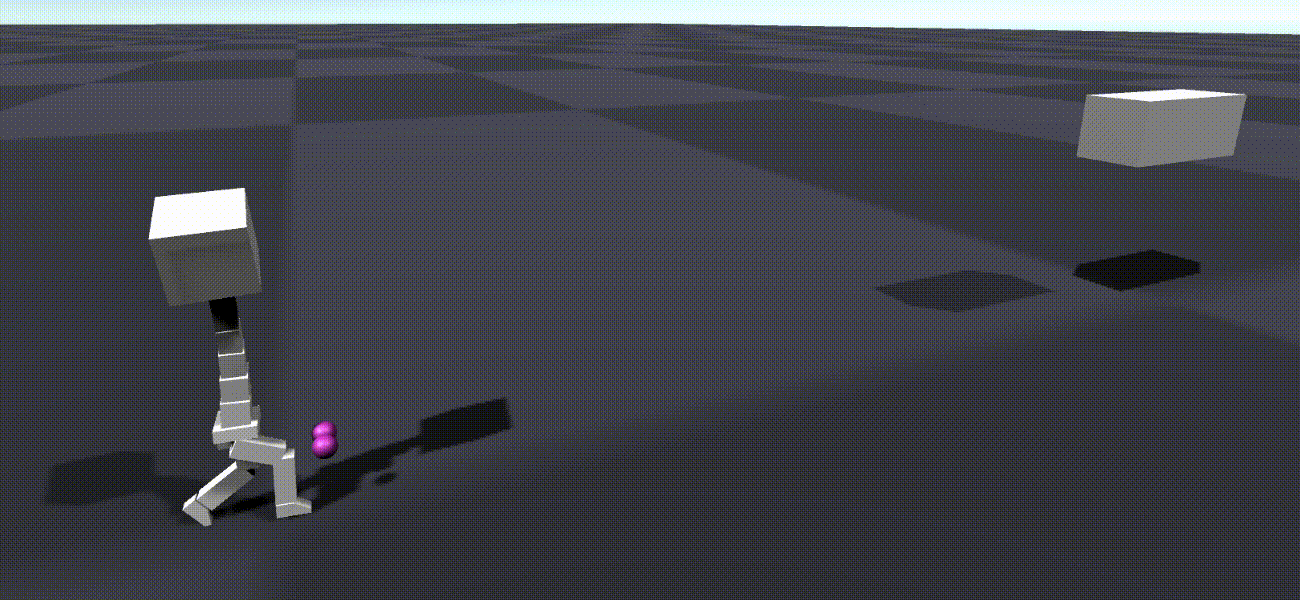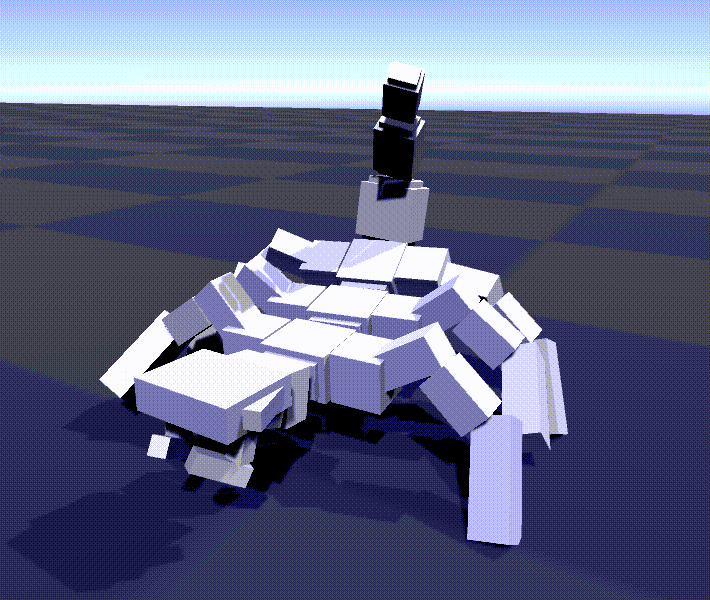
Inverse Kinematics -or IK for short- are a series of equations that can be used to calculate the most efficient position and angle for each bone in a limb, given a desired ending point. In other words, IK is math that lets animators puppet limbs without messing with individual joints.
As one might expect, once an IK solution is set up and ready to go, it is immensely faster to use than more traditional animation, as an animator typically needs to move only a fraction of the objects to achieve the same effect. A humanoid rig, for example, might have 17 major bones. Animated traditionally, each of those 17 bones would need to be rotated and shifted manually. With a simple IK solution on the limbs, that drops down to about 4 bones and 4 additional points in space. That’s less than half the things to move.
Additionally, an IK solution could be used in real-time if you wanted to. A common use for such would be a character standing on uneven ground, with their feet resting on the ground and the legs bending to accommodate. Without IK, a character wouldn’t feasibly be able to adjust to these kinds of environmental changes at run-time.
Raptor & Wobble
These two were both made to play with Inverse Kinematics in conjunction with Unity’s physics joints. Raptor’s tail was made entirely of these joints, allowing it to trail naturally behind the model as it moved, and Wobble’s entire upper body was assembled exclusively from such joints.
Neither presented any especially damning problems, I was somewhat surprised to find. In my experience, using two different kinds of physics-math on the same thing tends to go a little squirrel-y, but no such problems arose here. In fact, the pair were so stable that I could even smack Wobble’s entire body around with Rigidbodies, and nothing would break in the joints or the IK system on the legs.

In addition to this, Raptor used a creation of mine that I’ve started calling “Rubberized Inverse Kinematics,” or RIK. The principals are the same as normal IK solutions, but instead of setting the target point of a limb directly to the handle being animated, I create another invisible handle which, using Unity’s Rigidbody component and a script of my own devising, is constantly pulled towards the animated handle with a configurable force. In essence, instead of locking, say, a character’s wrist to an animated handle, I’ve basically used a rubber band to tie them together. This makes for much more fluid motions, albeit with a slightly lesser degree of fine control. In Raptor’s case, this RIK was used on the creature’s arms, allowing them to bounce slightly as it walked without any additional animation.
Scorp
Scorp is a more straight-forward test, meant to see how branching IK solutions would affect eachother. The entirety of Scorp’s main body is one long IK solution with 6 bones. Each pair of legs branches from one of these bones, and has a 3-segment IK solution of their own, each independently animated.
Frankly, I fully expected this to break before I even started animating. The IK solution I was using wasn’t really meant for long chains of segments, so I assumed the body would probably end up having a spasm or two as the bones suddenly snap to alternate positions. No such problems, though, luckily. It managed the animation like a champ, and even had a nice arc to everything.
The head was also rigged up, with the mandibles set up with my special RIK solution mentioned above, though it didn’t really show through in this case. The head itself is set to look in the direction of a target point, which for the purposes of this animation just wobbled back and forth slightly, but could turn in just about any direction -including those that a head really shouldn’t turn. Were this anything more than a big experiment, I would have put a limiter on the neck joint to keep it within the bounds of proper biology.
The legs were pretty straight-forward too. Each of the legs was parented to one of the spine’s segments, and only the foot targets were actually animated. The rest of what you see is all procedural. I had expected the legs to freak out when the body moved back and forth, but… as was becoming a surprising theme for Scorp, everything jsut worked. The legs adjusted to the motion easily, and the whole thing ended up looking great for how little actual animation there was set up.
